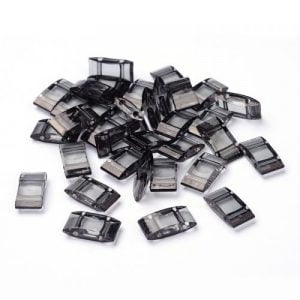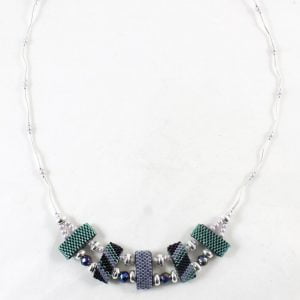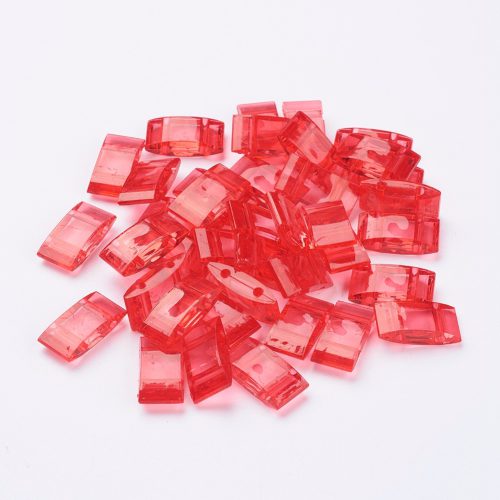If you’re a bead enthusiast searching for a versatile and innovative addition to your crafting toolkit, look no further than carrier beads. These unique beads offer endless possibilities for creating stunning and intricate beadwork designs that will dazzle and delight. Join us as we explore the beauty and versatility of carrier beads and discover how they can elevate your beadwork to new heights of creativity!
Carrier beads, also known as “pillow beads,” are specially designed beads with two parallel holes running through their length. These beads are typically made from acrylic and oblong or rectangular in shape, resembling tiny pillows, hence the name. They are usually about 1cm wide, slightly larger in the middle, then taper to meet at each end.
The dual-hole design of carrier beads makes them perfect for creating intricate bead weaving and embroidery patterns, as well as for incorporating other beads and embellishments. This unique design means you need to use two rows of cord or elastic when making your jewellery. Take a look at our full selection to buy here.

The carrier beads can be used to make exciting and intricate looking pieces of beaded jewellery in a very simple manner. You can create multiple peyote loops with the beads to make a beautiful necklace or bracelet in super fast time. But what is a peyote loop?
A Peyote Loop is made by using the Peyote stitch, also known as the gourd stitch. This is an off-loom bead weaving technique using 11/0 Delica seed beads. The Peyote stitch can be made with either an even or an odd number of beads per row. These pieces can be woven as flat strips or wrapped around as a tube, which you secure with a simple running stitch. Historically, tubular peyote has been used to make little bags or decorative sleeves for pan handles or bottles.
As you would imagine from the name the Peyote stitch dates back to times long before ours and was popular in both Ancient Egyptian and Native American cultures, where artefacts and costumes were decorated with the beadwork.
The name “peyote stitch” derives from the Native American church, where items were decorated and used in peyote ceremonies. Nowadays you’re more likely to see it in it the western world adorning high fashion garments on the catwalks of Milan, as it has become a hot favourite for use as embellishments by many of the worlds top designers of fashion and jewellery.
There are numerous designs you can choose from but the first thing to consider is whether to use an odd or even count Peyote stitch. An even count will usually use 3 seed beads per row and be approximately the width of 6 seed beads. An odd count covers the carrier bead completely, leaving no gaps either side. The advantage to using an odd count is that you can achieve centred designs, useful when you develop into more advanced creations.
You can end up with about 25 rows per bead, so it’s not for the faint hearted but the results are truly beautiful and unique. It’s much simpler than it looks and I find it very therapeutic, much like all beading. For our full range of seed beads why not pop in-store or you can click here to see our online offering.




Très bien! J’aime beaucoup.